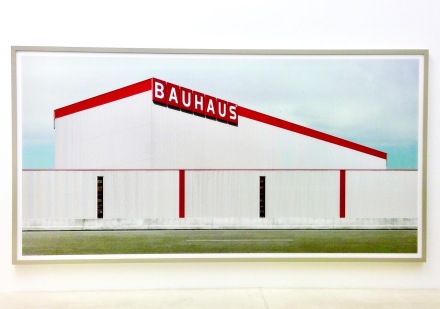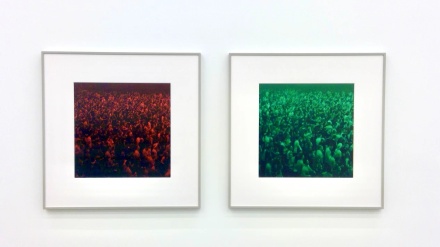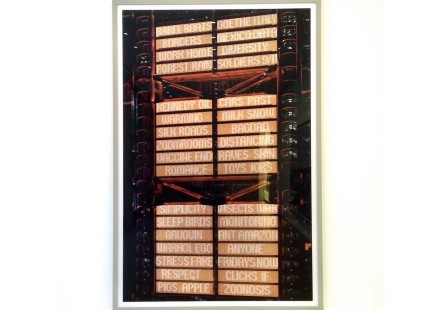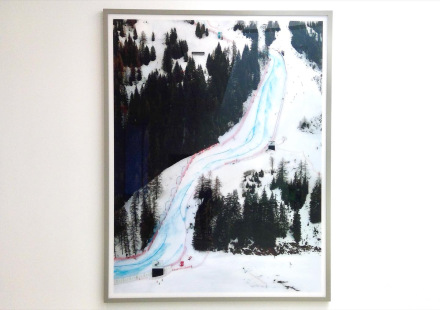
Andreas Gurksy, Bauhaus (2020), via Art Observed
On view this summer at Gagosian New York, photographer Andreas Gursky compiles a selection of both new and recent images, continuing his documentation and exploration of the landscape of modernity. Gursky’s large-scale photographs evoke the global flow of information, the chaos of contemporary life competing with the classical desire for order. He portrays the visual extremes of the present moment with an objective eye, capturing built and natural environments on a grand scale in richly detailed images of autobahns and cruise ships, mountains and waterfalls. While comparable in their scope to early nineteenth-century landscape paintings, Gursky’s works retain the precision of photography. Many have been digitally manipulated, and often reveal a sensitivity to the damaging effects of human systems on the natural world.
Several of the images in the exhibition hinge on references to Gursky’s previous works. Rhein III (2018), which represents the titular river as an abstracted strip, recalls the artist’s earlier Rhein II (1999); while the setting and proportions of the two images are almost identical, the subject is shown, in the former, to have suffered from that summer’s drought. Gursky’s concern with ecology is also evident in Streif (2021), which depicts a downhill ski slope in Kitzbühel, Austria, in January 2020. While the site is recognizable, and features the colored boundary markings common to such tracks, the panoramic shot is in part a digital construction. This visual artifice echoes the unnatural character of the slope itself, which is maintained by using environmentally damaging snow cannons.

Andreas Gurksy, Connect I & II (2018), via Art Observed

Andreas Gurksy, Königsbergerstrasse (2020), via Art Observed
The monumental Eisläufer (2021), which was taken during a cold snap in the winter of 2020, depicts frozen flood waters in Düsseldorf, Germany, recording their temporary transformation into a spot where locals gathered to walk, skate, and play hockey. In its timeless subject and composition, again engineered in part through extensive digital manipulation, the work evokes the paintings of Pieter Brueghel the Elder and harks back to the visual language of Dutch landscape painting. The fact that the skaters are wearing masks and practicing social distancing, however, also roots it firmly in the era of COVID-19.

Andreas Gurksy, Hong Kong Shanghai Bank III (2020), via Art Observed

Andreas Gurksy, Streif (2021), via Art Observed
In Salinas (2021), Gursky presents an image of the setting sun at Las Salinas salt flats in Ibiza, Spain, where seawater is channeled into fields before evaporating to produce salt. This process was brought to the island by the Phoenicians and has produced a landscape that is at once ancient and artificial. To the radiant sky above the site, the striking coloration of which evokes Éric Rohmer’s film Le Rayon vert (The Green Ray, 1986), Gursky has added the linear cloud formation generated by a passing airliner—a subtle reminder of recent international conflicts. “By incorporating a contrail like that into an image of perfect beauty,” he tells writer Max Dax in Gagosian Quarterly, “I’m toying with the tension between sublimity and destruction.”
Gursky is a master of posing both
– D. Creahan
Read more:
Andreas Gursky at Gagosian [Exhibition Site]



